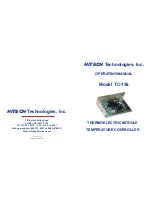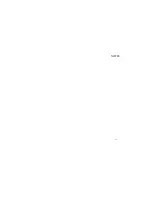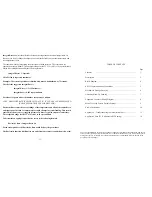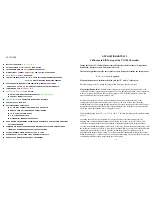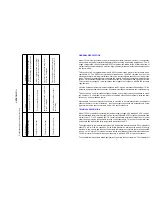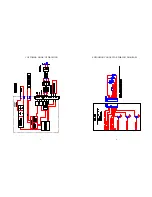
Features
...................................................................................
1
Description
...................................................................................
2
Block Diagram .................................................................................
4
RS232 Communications Connections ...............................................
5
Mechanical Package Drawing ...........................................................
6
Customer Hook-Up Drawing ............................................................
7
Expansion Connector Wiring Diagram ..............................................
8
Menu Tree with Factory Default Settings ...........................................
9
Set-Up Instructions ...........................................................................
10
Appendix A - Troubleshooting Communications Port ........................
13
Application Note 353 (5 Minutes to PID Tuning) ...............................
14
TABLE OF CONTENTS
In no event shall HiTECH be liable for any damages whatsoever (including without limitation, damage for
loss of business profits, business interruption, loss of business information, or any other pecuniary loss)
arising out of the use or inability to use this HiTECH product, even if HiTECH has been advised of the
possibility of such damages.
Integral Reset monitors the difference between the set point and the actual temperature. Its
function is to slowly change the output power until the delta between actual temperature and
set temperature is zero.
The function works by integrating the error signal at fixed intervals. These intervals are
expressed in repeats/minute. The acceptable range for the TC-136 is 0.01 to 10 repeats /minute.
Start with a setting determined by the following formula.
Integral Reset = 1/ 2(period)
Note: Period is expressed in minutes.
Example: The system‘s period of oscillation with narrow bandwidth was 75 seconds.
Therefore the suggested Integral Rate is
Integral Reset = 1/ 2(1.25 minutes)
Integral Reset = 0.625 repeats/minute
For slower response reduce the number of repeats per minute.
NOTE: DERIVATIVE RATE IS DIFFICULT TO APPLY. IF YOU ARE NOT EXPERIENCED
IN PROCESS CONTROL, ASK FOR HELP NOW!
Derivative Rate senses the rate of change of the temperature and allows the controller to
anticipate power needed to compensate for rapid changes in system loading. This term is
generally used only on very sluggish systems or where very quick response is necessary.
The acceptable range for the TC-136 is 0.01 to 10 cycles/minute.
To determine an appropriate derivative rate, use the following formula.
Derivative Rate = Integral Reset / 10
For the example above the Derivative Rate would be .06 cycles per minute.
The Derivative function is difficult to use and often causes more trouble than it is worth!
15
Page

